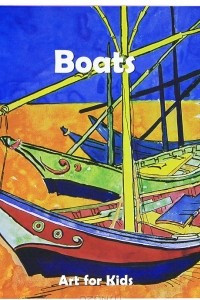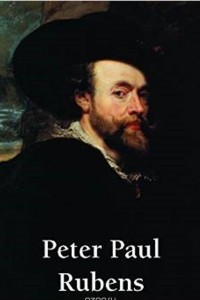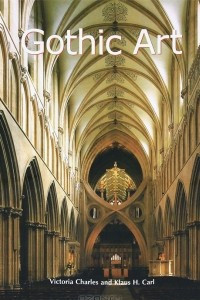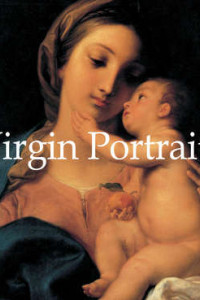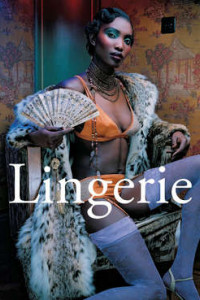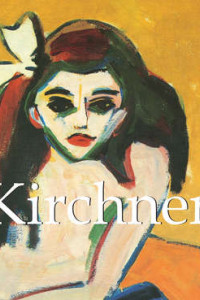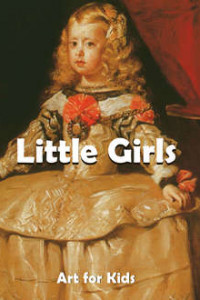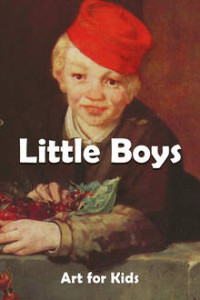- Главная
- Авторы
- Klaus H. Carl
- Книги Klaus H. Carl
Книги Klaus H. Carl
Klaus H. Carl - автор 21 книги. Из известных произведений можно выделить: Boats: Puzzle books, German Painting, Virgin Portraits. Все книги можно читать онлайн и бесплатно скачивать на нашем портале.
Now kids can get their hands on the wonderful water vessels that caught the attention of famous artists! Children will love these colourful jigsaw puzzles, each made from a well-known painting of boats. They can imagine sailing to the far corners of the world in a mighty ship or floating peacefully on a barge under the trees, all while having a hands-on experience with fine art.
Universally celebrated for his rosy and concupiscent nudes, Peter Paul Rubens was an artist whose first concern was sensuality in all its forms. This Baroque master devoted himself to a lifelong celebration of the joys and wonders of the physical realm. He felt that the human body was as lovely and natural as the many natural landscapes he painted as a young man.
Gothic art finds its roots in the powerful architecture of the cathedrals of northern France. It is a medieval art movement that developed all across Europe for more than 200 years. Leaving Roman roundish forms behind, the architects started using flying buttress and pointed arches to open cathedrals to the daylight. Period of great economic and social changes, the gothic period also saw the devel...
In art history, the term Romanesque art distinguishes the period between the eleventh and the thirteenth centuries. This era showed a great diversity of regional schools each with their own unique style. In architecture as well as in sculpture, Romanesque art is marked by its raw forms. Through its rich iconography and captivating text, this work reclaims the importance of this art which is today ...
During the Renaissance, Italian painters would traditionally depict the wives of their patrons as Madonnas, often rendering them more beautiful than they actually were. Over centuries in religious paintings, the Madonna has been presented as the clement and protective mother of God. However, with the passing of time, Mary gradually lost some of her spiritual characteristics and became more mortal ...
Mega Square Shoes focuses on the history of the shoe and elevates the shoe to the rank of a work of art. The author is a leading expert on the subject and curator of France‘s Shoe Museum, which holds the greatest shoe collection in the world, with 12,000 specimens.
What do the thousands of images of bras and panties on perfectly sculpted bodies that we see spread across billboards and magazines say about our society?
Rembrandt is completely mysterious in his spirit, his character, his life, his work and his method of painting. What we can divine of his essential nature comes through his painting and the trivial or tragic incidents of his unfortunate life; his penchant for ostentatious living forced him to declare bankruptcy. His misfortunes are not entirely explicable, and his oeuvre reflects disturbing notion...
The self-appointed “leader” of the artists’ group Die Brücke (Bridge), founded in Dresden in 1905, Ernst Ludwig Kirchner was a key figure in the early development of German Expressionism. His first works show the influence of Impressionism, Post-impressionism and Jugendstil, but by about 1909, Kirchner was painting in a distinctive, expressive manner with bold, loose brushwork, vibrant and non-nat...
Dürer is the greatest of German artists and most representative of the German mind. He, like Leonardo, was a man of striking physical attractiveness, great charm of manner and conversation, and mental accomplishment, being well grounded in the sciences and mathematics of the day. His skill in draughtsmanship was extraordinary; Dürer is even more celebrated for his engravings on wood and copper tha...
Ever since the ancient Greeks sculpted the first kouros, children have been a source of inspiration for some of the world's greatest artists.Whether portraits of their own children, friends, and family members, or a nostalgic psychological portrayal of the artist's own youth, depictions of children in art remain arresting examples of an intersection between the picturesque innocence of childhood a...
Condemned by the Nazis as a degenerate artist, Franz Marc (1880-1916) was a German painter whose stark linearity and emotive use of color eloquently expressed the pain and trauma of war. In work such as his celebrated Fate of the Animals, Marc created a raw emotional expression of primitive violence which he called a premonition of the war which would eventually be the cause of his own untimely de...
Ever since the ancient Greeks sculpted the first kouros, children have been a source of inspiration for some of the world's greatest artists.Whether portraits of their own children, friends, and family members, or a nostalgic psychological portrayal of the artist's own youth, depictions of children in art remain arresting examples of an intersection between the picturesque innocence of childhood a...
Universally celebrated for the intricacy of his pointillist canvases, Georges Seurat (1859-1891) was a painter whose stunning union of art and science produced uniquely compelling results. Seurat’s intricate paintings could take years to complete, with the magnificent results impressing the viewer with both their scientific complexity and visual impact. His Un Dimanche Après-Midi à l’Île de la Gra...
This book offers our young readers an enjoyable approach to the history of art by transforming five masterpieces into fun puzzles. provides parents and teachers with a wonderful way to develop children’s imaginations and grow their awareness of great art from an early age.
Diego Rodríguez de Silva y Velázquez (June 1599 – August 6 1660), known as Diego Vélasquez, was a painter of the Spanish Golden Age who had considerable influence at the court of King Philip IV. Along with Francisco Goya and Le Greco, he is generally considered to be one of the greatest artists in Spanish history. His style, whilst remaining very personal, belongs firmly in the Baroque movement. V...
This book offers our young readers an enjoyable approach to the history of art by transforming five masterpieces into fun puzzles. provides parents and teachers with a wonderful way to develop children’s imaginations and grow their awareness of great art from an early age.
Diego Velázquez (Séville, 1599 – Madrid, 1660)Diego Velázquez était un artiste anticonformiste de l'ère baroque. A l'âge de vingt-quatre ans, Velázquez fit son premier voyage à Madrid avec son professeur, Francisco Pacheco, rencontré à Séville.Rapidement, il se qualifia comme maître peintre. Le roi Philippe IV remarqua son génie et le nomma peintre de cour en 1627. Peu après, l'artiste se lia d'am...
Mega Square Herbarium is based on the work of Basilius Besler, the famous plant expert who, for the first time in history, described, painted and engraved over a thousand species of plants. His drawings are of great scientific as well as artistic value, and offer vivid insights into Europe’s eclectic flora.
Chaïm Soutine (1893-1943), the unconventional and controversial painter of Belorussian origin, combines influences of classic European painting with Post-Impressionism and Expressionism. As a member of the Artists from Belarus, a group within the Parisian School, he created an oeuvre mainly consisting of landscapes, still lifes, and portraits. His individual style, characterised by displays of hum...
In a country only unified since 1871, German culture and art is derived from ancient tradition. Studying German painting requires viewing it on a different scale, larger than the current geographical frontiers. From the Middle Ages through to the New Objectivity of the 20th century, we introduce you to the German artists who have marked history: Albrecht Dürer, the Romantic Caspar David Friedrich,...

